You are using an out of date browser. It may not display this or other websites correctly.
You should upgrade or use an alternative browser.
You should upgrade or use an alternative browser.
Interesting metal ring.
- Thread starter Garabaldi
- Start date
CRUSADER
Emerald Member
Probably not Celtic Ring money 
http://forum.treasurenet.com/index.php/topic,272310.0.html
These rings have been used in the UK since Roman Times (maybe a bit before), for as many different uses as you could think off. No way to tell for sure which of the thousands of uses it might be

http://forum.treasurenet.com/index.php/topic,272310.0.html
These rings have been used in the UK since Roman Times (maybe a bit before), for as many different uses as you could think off. No way to tell for sure which of the thousands of uses it might be
Upvote
0
turtlefoot13
Hero Member
- Joined
- Aug 23, 2009
- Messages
- 733
- Reaction score
- 105
- Golden Thread
- 0
- Location
- The Ozarks, Missouri
- Detector(s) used
- Teknetics Alpha 2000
- Primary Interest:
- Relic Hunting
Upvote
0
trikikiwi
Silver Member
- Joined
- Oct 5, 2006
- Messages
- 3,544
- Reaction score
- 655
- Golden Thread
- 0
- Location
- New Zealand
- Detector(s) used
- Minelab Sovereign GT
- Primary Interest:
- All Treasure Hunting
End of a pull chain 
it seems to be worn on the internal diameter on one side only
Mike

it seems to be worn on the internal diameter on one side only

Mike
Upvote
0
Silver Searcher
Gold Member

Finding a exact use would be hard
 because they could be used for a lot of things, and at any time scale
because they could be used for a lot of things, and at any time scale 
But definitely not Celtic Ring Money, I would be loaded if they were
 here's a site that advertises Bronze Rings as currency. http://www.ancientresource.com/lots/celtic.html
here's a site that advertises Bronze Rings as currency. http://www.ancientresource.com/lots/celtic.htmlSS
Upvote
0
wvcoindigger13
Tenderfoot
- Joined
- Jul 11, 2010
- Messages
- 8
- Reaction score
- 0
- Golden Thread
- 0
- Location
- Moatsville, WV
- Detector(s) used
- White's Coinmaster
Appears to possibly be part of a grommet from a canvas army tarp.
Upvote
0
Tuberale
Gold Member
- Joined
- May 12, 2010
- Messages
- 5,775
- Reaction score
- 3,452
- Golden Thread
- 0
- Location
- Portland, Oregon
- Detector(s) used
- White's Coinmaster Pro
I second the grommet suggestion. To me, it looks nearly the same size as grommets on PVC tarps I just bought. Maybe a different metal content, but the size seems consistent.
BTW, nice to see the silver Roosy as a size comparison, Garibaldi.
BTW, nice to see the silver Roosy as a size comparison, Garibaldi.
Upvote
0
Silver Searcher
Gold Member

Came across some very interesting imformation regarding these strange metal rings we all find, they could have been used for the making of The Dorset Button 1680s known as High tops and Nobs. Orginally the button was made on a Bone ring.
Its most likely that the rings with Chamfered sides like the examples shown are the type used for these embroidered buttons. The group of copper-alloy rings shown here show the different thickness's and sizes which Detectorist's come across and are used in these buttons. allot of these copper-alloy rings have been manufactured for many other purposes.
http://forum.treasurenet.com/index.php/topic,272310.0.html
Not only were thread buttons less expensive than bone, wood or metal but they would not break during the strenuous beating and scrubbing. Unlike buttons made of other materials, thread buttons are soft and comfortable to lay against while sleeping.
During the early-to-mid-eighteenth century some such officers and official's are described as having worn buttons of embroidered gold or gilded metallic cord or thread. These buttons would have been either made with cut bone centres or with supporting circular metallic loops like those shown here right of picture. The loops formed circular frames around and over which could be sewn/ threaded or embroidered the knotted pattern of the buttons, the completed buttons would then be sewn to the uniform.
This type of embroidered button is known as the Dorset Button. The Dorset button began in Shaftesbury, Dorset probably between the years 1680 - 1700, The first buttons were known as "High Tops" and "knobs" and were made from a disc cut from Dorset Horn sheep.
The disc was covered by a small piece of material and worked with a needle and thread to make a conical shape or knob shape depending on the type of button required. The high-tops were worn by gentlemen on their hunting waistcoats and also used for ladies dresses, other types of buttons were then developed using copper wire twisted on a spindle with the ends cut and dipped in solder, children of both sexes were employed as "Winders & and Dippers" others threaded the rings and were called Stringers.
An alloy for the rings was invented and old buttons made, these rings show no signs of rust. There were three grades of ring the lower two grades were sold in this country. In 1850 a button making machine shown in the greta exhibition of London brought a tragic end to the industry. Another name used for these rings are fabric covered or thread cartwheel buttons.
SS
Attachments
Upvote
0
Lucas
Bronze Member
Those were most commonly shirt buttons, and were shirt button size, i.e. little.
"Thread button" is usually used to describe buttons with a wound thread core.
"Dorset button" is usually used to describe buttons with a horn, metal etc. core.
Both types are covered by thread stitching or hitching.
"Death's head" buttons are made with a wooden or bone core that has a small hole in the middle (button mold/mould).
"Thread button" is usually used to describe buttons with a wound thread core.
"Dorset button" is usually used to describe buttons with a horn, metal etc. core.
Both types are covered by thread stitching or hitching.
"Death's head" buttons are made with a wooden or bone core that has a small hole in the middle (button mold/mould).
Upvote
0
Silver Searcher
Gold Member
The average size of these Dorset or Cartwheel buttons was 29mm external and 4mm width, a bit bigger than a shirt Button. 29mm average size would make the largest about 40mm, During the early-to-mid-eighteenth century some such officers and official's are described as having worn buttons of embroidered gold or gilded metallic cord or thread. These buttons would have been either made with cut bone centres or with supporting circular metallic loops like those shown here. The loops formed circular frames around and over which could be sewn/ threaded or embroidered the knotted pattern of the buttons, the completed buttons would then be sewn to the uniform.Lucas said:Those were most commonly shirt buttons, and were shirt button size, i.e. little.
"Thread button" is usually used to describe buttons with a wound thread core.
"Dorset button" is usually used to describe buttons with a horn, metal etc. core.
Both types are covered by thread stitching or hitching.
"Death's head" buttons are made with a wooden or bone core that has a small hole in the middle (button mold/mould).
SS
Upvote
0
Silver Searcher
Gold Member
It just makes sence about these rings, we find a lot over here and different sizes, most of them I have..... have the chamfered sides like the one's posted. I think the late 1700s date fits nicely also, with the one's found over thereLucas said:Oh, interesting! My info is mid-to-late 18th and early 19th.
The thread core buttons just won't work in a large size. But you could go pretty big with a horn or metal ring.By mid to late century, the death's head was the fashion (2nd pic).

SS
Upvote
0
shaun7
Gold Member
Silver Searcher said:It just makes sence about these rings, we find a lot over here and different sizes, most of them I have..... have the chamfered sides like the one's posted. I think the late 1700s date fits nicely also, with the one's found over thereLucas said:Oh, interesting! My info is mid-to-late 18th and early 19th.
The thread core buttons just won't work in a large size. But you could go pretty big with a horn or metal ring.By mid to late century, the death's head was the fashion (2nd pic).
SS
You're right mate, it does make sense
Upvote
0
timekiller
Silver Member
- Joined
- Feb 10, 2009
- Messages
- 3,852
- Reaction score
- 964
- Golden Thread
- 1
- Location
- Morehead City / Newport NC
- 🥇 Banner finds
- 1
- Detector(s) used
- Minelab E-Trac
- Primary Interest:
- All Treasure Hunting
Upvote
0
Silver Searcher
Gold Member
I think we are looking for genuine repliesTimekiller said:I'm going to say sparkplug ring Money!
I find them alot that look just like that.Around the water ways!
 didn't know they made spark plugs with a internal diameter of over a inch
didn't know they made spark plugs with a internal diameter of over a inch 
SS
Upvote
0
timekiller
Silver Member
- Joined
- Feb 10, 2009
- Messages
- 3,852
- Reaction score
- 964
- Golden Thread
- 1
- Location
- Morehead City / Newport NC
- 🥇 Banner finds
- 1
- Detector(s) used
- Minelab E-Trac
- Primary Interest:
- All Treasure Hunting
It had nothing to do with your post SS.I'm talking about his.And I see nothing saying his is one inch across.But I do know I find these big rings here on the coast that have come from old large sparkplugs.Just like these in my hand.Silver Searcher said:I think we are looking for genuine repliesTimekiller said:I'm going to say sparkplug ring Money!
I find them alot that look just like that.Around the water ways!
didn't know they made spark plugs with a internal diameter of over a inch
SS
Attachments
Upvote
0
Silver Searcher
Gold Member
They look nothing like the ones posted.Timekiller said:It had nothing to do with your post SS.I'm talking about his.And I see nothing saying his is one inch across.But I do know I find these big rings here on the coast that have come from old large sparkplugs.Just like these in my hand.Silver Searcher said:I think we are looking for genuine repliesTimekiller said:I'm going to say sparkplug ring Money!
I find them alot that look just like that.Around the water ways!
didn't know they made spark plugs with a internal diameter of over a inch
SS
Upvote
0
Silver Searcher
Gold Member

I have found a lot of these rings and would like to get to the bottom of the ID, obviously some rings have outher uses, but the one's posted in both threads with the chamfered sides are the one's I would like to find out about.
After all isn't this what the Whatsits thread is about

SS
Upvote
0
timekiller
Silver Member
- Joined
- Feb 10, 2009
- Messages
- 3,852
- Reaction score
- 964
- Golden Thread
- 1
- Location
- Morehead City / Newport NC
- 🥇 Banner finds
- 1
- Detector(s) used
- Minelab E-Trac
- Primary Interest:
- All Treasure Hunting
Upvote
0
Similar threads
Users who are viewing this thread
Total: 1 (members: 0, guests: 1)

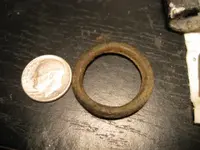

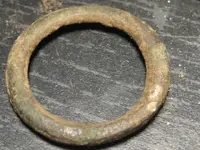
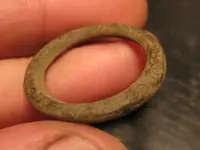
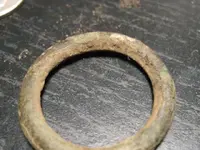
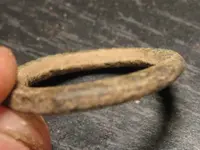
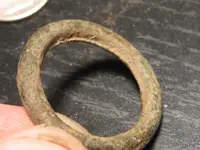
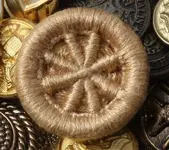

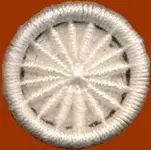
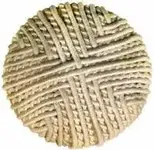
![trojan_spark_plug[1].webp](/data/attachments/428/428704-80c572b09c53ac3dc316123071ed98fb.jpg?hash=x-ZfhWQaLL)


![pic092810951[1].webp](/data/attachments/428/428750-d5493c123ddc27b3db645fdcbc48bc58.jpg?hash=Xi7Par6774)
![plugs_2ring[1].webp](/data/attachments/428/428757-f7367d83d0eb83f4cbc0421a948ef0f9.jpg?hash=J1qEozrRwO)
